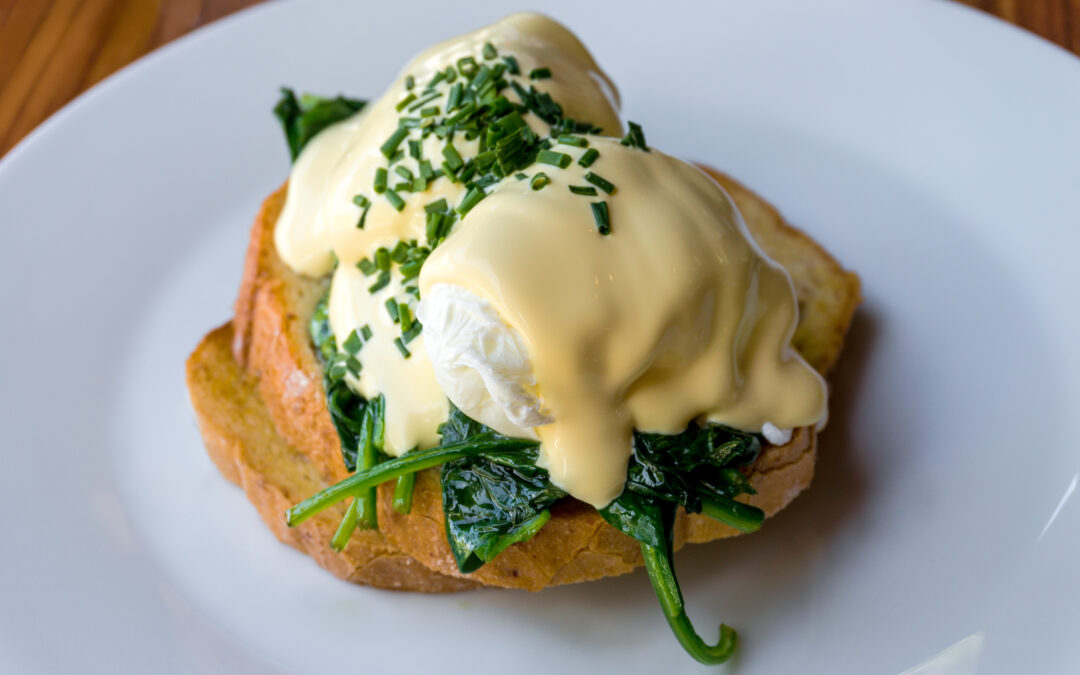
Photos: Chris Emeott
Lead brewer of Excelsior Brewing Company shares his love for the craft.
For James Birnie, beer is more than just a refreshing beverage. It is a way of expressing his creativity and granting a nod to history. “Beer is cool because it is fun to drink … It is also something that is very subjective and is really creative,” says Birnie, head brewer at Excelsior Brewing Company. “There are different facets of it and styles to it, and there is a historic aspect to it. That is kind of why I got into it.”
Birnie started his journey in the beverage industry in his early 20s as a bartender, and he took an interest in the unique taste of craft beers. Concocting his own brews in the comfort of his basement in Minneapolis, Birnie soon developed a deeper fascination for the malted drink. After realizing he could turn his passion into a career, he went to Oregon State University in Corvallis, Oregon, for four years to study food science, chemistry and fermentation. After graduation, he moved back to the Midwest to launch his career. Landing his first gig as an intern at St. Paul’s Summit Brewing Company, Birnie began to learn the ins and outs of brewing. He worked there for five years before making the switch to Excelsior Brewing Company three years ago.

“He is one of the best trained brewers in Minnesota,” says Randy Howe, vice president of sales at Excelsior Brewing Company. “[Birnie’s degree] allows him to brew beers consistently over and over again … [He] has really mastered that.”
While he’s been in the brewing game for several years, Birnie is still learning and finding new flavor profiles to present. He says he likes to break down the layers of a beer. Taking a general flavor, such as peach or vanilla, and finding innovative ways to accentuate these profiles by experimenting with the various characteristics of a beer. “I kind of reverse engineer beers,” he says.
Beer is unique in that it does not have official designations, as does wine. A cabernet, for example, can only be labeled as such if it contains a certain percentage of cabernet grapes (about 13 percent). In other instances, the wine is named after the region it was produced in, such as Chianti or Champagne. For beer, there are defining characteristics that distinguish one style from the next, but there are no parameters to what must be done to accomplish it, says Birnie. However, most brewers will keep things stylistically accurate to pay homage to the creators before them.
“It is really fun to recreate those styles that people literally made and consumed for years and years,” Birnie says. “There is another aspect that there are new ingredients produced, different hops being bred and new equipment being brought to the market, so there is always opportunity to differentiate what you do in terms of new techniques, ingredients and flavors.”
To accomplish this, Birnie starts with the basics: beer concentration (the ABV percentage), the ideal color, the residual gravity (the overall sweetness of the beer) and the main flavor profile. To ensure his next creation hits the taste buds in all the right ways, he uses a self-developed worksheet as a guide. Though there is room for exploration from a beer type and flavor perspective, he says the main scientific approach to pay attention to pertains to the amount of malt that is incorporated. The malt concentration is what ultimately determines the alcohol percentage (ABV) of the drink, which, for some, is a major defining characteristic.
 Taking his own interests into consideration, Birnie says he also derives a lot of his inspiration from others in the community. Learning from others’ passions, he says he enjoys fusing them with his own. For past brews, he has partnered with beekeepers at the Lowry Nature Center in Carver Park Reserve in Victoria to source honey, and he has used pressed grapes from a breeding researcher at the Minnesota Landscape Arboretum in Chaska.
Taking his own interests into consideration, Birnie says he also derives a lot of his inspiration from others in the community. Learning from others’ passions, he says he enjoys fusing them with his own. For past brews, he has partnered with beekeepers at the Lowry Nature Center in Carver Park Reserve in Victoria to source honey, and he has used pressed grapes from a breeding researcher at the Minnesota Landscape Arboretum in Chaska.
“It is like my own little adult playground where I can experiment with new varieties of hops, new varieties of wheat, new malt, new styles. I can do just about anything that I want because we are going to take that [and] put it on tap to get instant feedback from our guests,” he says about the time spent in the brewery. “Being able to brew any of the wild things I can concoct is a lot of fun.”
That creativity is cultivated at Excelsior Brewing Company, which is unique in its pilot approach to beer. This method allows the brewhouse to test a variety of beers in small batches to ensure quality and likability with its customers. “The 3.5-barrel system allows [Birnie] and the other brewers to experiment and play around with different ingredients, flavors and beer styles. Normally, we brew 31 gallons or two kegs, but this allows us to brew five or six at a time,” Howe says.
To maintain the creativity year-round, the brewery keeps six of its 18 beers and two seltzers on constant rotation (five core and one reoccurring seasonal feature). The other 10–14 varieties are experimental groups created, tested and sampled by inhouse customers. The flavors that are extremely well received are then considered for packaging and kegs outside the brewery at other service locations. “Having a pilot brewhouse allows [Birnie] to have fun,” Howe says.
Know Your Stuff
Whether you’re at a brewery, bar or just around the table at home, it’s always good know of what you speak … and drink.
ABV: A measurement used to determine the alcohol content of a beer
Ale: Beers made with top fermenting yeast
Barrel: A 31-gallon vessel used in the process of aging, conditioning and fermenting beer
Body: The consistency and thickness of a beer
Fermentation: The process of converting sugars into equal parts alcohol and carbon dioxide through yeast activation
Hops: A natural flavoring agent for beer from the humulus lupulus plant (Typically, it’s most present in India Pale Ales (IPAs). The lupulins provide a source of bitterness to taste and smell.)
IPA: A light-colored beer with a higher alcohol and hop content
Lace: The lace-like pattern of foam that remains on the side of a glass after drinking a beer
Lager: A lighter, crisper beer that is made with bottom-fermenting yeast at a cooler temperature
Malt: Fermented barley that has been steeped in water, germinated and dried in a kiln to transform the starches into dissolvable sugars
Sour: A more acidic and tart beer that is typically profiled by fruitier flavors, like peach or raspberry
Stout: A dark, heavy-bodied beer made from black patent malt
The Brews get a Facelift
Eliminating the use of glass bottles, Excelsior Brewing Company is shifting to cans. This new approach coincides with the business and lakeside lifestyle model it strives to achieve. Says Birnie, “We try to incorporate [the] lakeside model in everything we do here.” The biggest factor is the functionality of the material. As a lighter weight option, the can makes the brews more portable for boat and beach goers and are also easily recyclable.
Happy Beerday!
This year marks the 10-year anniversary of Excelsior Brewing Company. To celebrate, the brewery hosted a two-day Beerday Festival in June. The event featured a special birthday IPA, brats, burgers, hot dogs and a state-fair favorite of freshly-dipped corn dogs.
Excelsior Brewing Company
421 Third St., Excelsior; 952.474.7837
Facebook: Excelsior Brewing Company
Instagram: @excelsior_brewing























